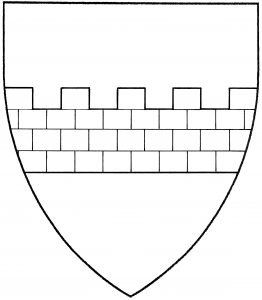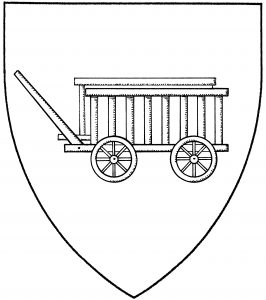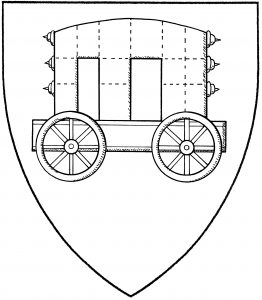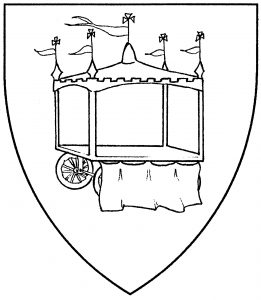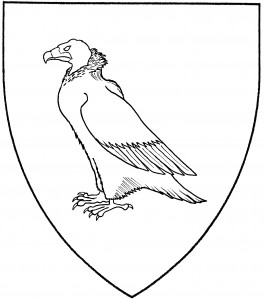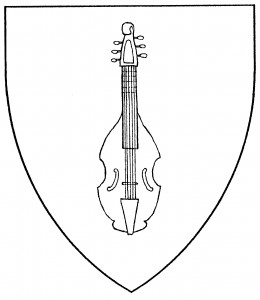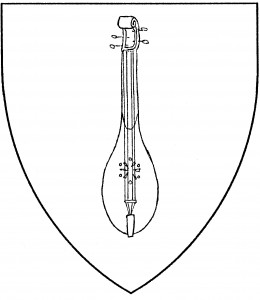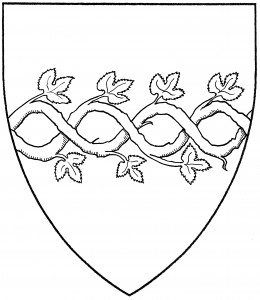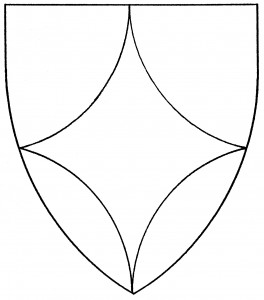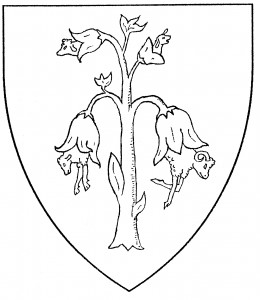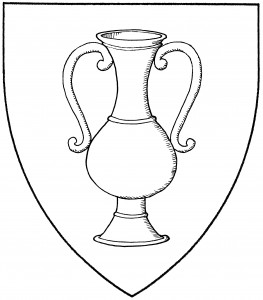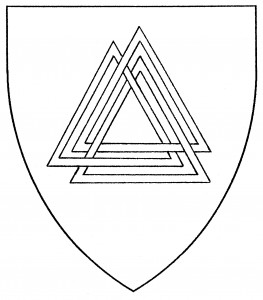Two forms of wall are found in period armory. The default form is embattled and throughout, negligibly different from a fess embattled; this form is found in the arms of Wineck, c.1460 [GATD 20v]. The other form of wall issues from base, which must be explicitly blazoned; this form is found in the arms of Kettenberg or Calterberg, also c.1460 [GATD 20v]. The latter form of wall may be fortified with watch towers, or have a port or gate; such details are always blazoned. The illustration shows a wall issuant from base with a gate.
As walls are assumed to be of stone, they are frequently drawn masoned, even when not explicitly blazoned. For related charges, see bridge, fence.
Joella of Blue Lion’s Keep bears: Per fess argent and azure, a lion passant and a tower, conjoined to sinister to a wall, all within a bordure counterchanged.
Ziegfried Gunter von Wieselburg bears: Or, a wall issuant from base gules, the gate closed proper, and issuant from the battlements a demi-weasel rampant sable.
Griffith Jenner bears: Sable, a wall issuant from base argent masoned and portalled sable and in chief three A-frame plumb lines Or.
